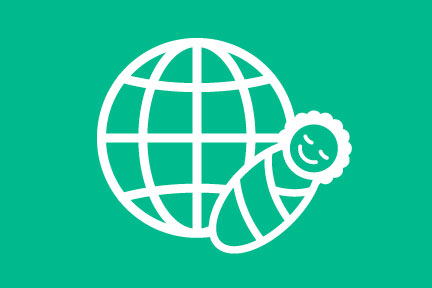The Basics of International Adoption

What is International Adoption?
International adoption is similar to domestic adoption because both consist of the legal transfer of parental rights and responsibilities from a child’s birth parents or other guardian to a new parent or parents. However, international adoptions are different from domestic adoptions because of the country-specific immigration laws. To qualify as an adoption for immigration purposes into the U.S., generally, the adopted child must have the same status and relationship to the adoptive parents as a child by birth. Unfortunately, what some countries call “adoptions” are more accurately described as guardianships under U.S. law, and are not considered adoptions for U.S. immigration purposes because the “adoption” does not necessarily extinguish the birth parents’ rights. Some countries whose “adoptions” do not meet the necessary criteria include: Afghanistan, Japan, Malaysia, Pakistan, Saudi Arabia, and many African nations.Who Can Adopt?
Anyone who is eligible to adopt a child under U.S. law may be eligible to adopt a child from another country and bring the child to the U.S. U.S. Citizenship and Immigration Services (USCIS), of the Department of Homeland Security, makes this eligibility determination, and a prospective adoptive parent or couple may not bring an adopted child into the U.S. until USCIS determines that the adoptive parent(s) are eligible to adopt from another country.Some of the eligibility requirements for adoptive parent(s) include: being a U.S. citizen; if unmarried, being at least 25 years old; and/or if married, jointly adopting the child with a spouse that is either a U.S. citizen or has legal status in the United States. Adoptive parent(s) must also meet certain requirements that will determine suitability, including passing criminal background checks, fingerprinting, and a home study. Additionally to qualify to adopt under U.S. law, adoptive parent(s) must also meet their home state’s requirements for adopting.
How To Adopt
Generally, in order to finalize an international adoption, an adoption service provider is required to guide you through the process. Adoption service providers are required to disclose all expected costs associated with the adoption to the adoptive parent(s) before signing an adoption services contract.International adoptions are governed by three sets of laws: U.S. federal law, the laws of the child’s country of residence, and the laws of the adoptive parent(s) U.S. state of residence. Notably, the U.S. is party to a treaty on international adoption called the Hague Convention on Protection of Children and Cooperation in Respect of Intercountry Adoption (Hague Adoption Convention). The treaty governs adoptions between the United States and approximately ninety other countries. The process of adopting a child from a Convention country differs in several key ways from adopting a child from a country not party to the Convention.
The time it takes to adopt a child from their country of residence and bring them to the U.S. will vary depending on the circumstances. Typically, it takes anywhere from about one to four years, though it can take longer. Some factors that contribute to the amount of time it takes to finalize an adoption include: the adoption procedures of the child’s country of residence, the U.S. immigration process, the specific circumstances of the adoption, and the adoption service provider’s process.
The intercountry adoption process is not only complex, but unexpected complications often arise. If you are considering international adoption, find an adoption lawyer to help guide you through the process by quickly posting a short summary of your legal needs on www.legalserviceslink.com, and letting the perfect attorney come to you.
Do You Need An Attorney?
If so, post a short summary of your legal needs to our site and let attorneys submit applications to fulfill those needs. No time wasted, no hassle, no confusion, no cost.

